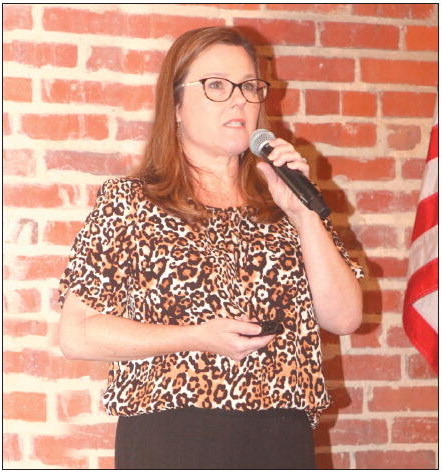November Is …
Lifestyle risk factors for lung cancer
Lung cancer is one of the deadliest diseases in the world. According to the World Health Orga nization, 1.8 million individuals lost their lives to lung cancer in 2020. That's nearly twice as many deaths as the second most deadly cancer.
Though many cancers are caused by factors beyond individuals' control, that's not the case with lung cancer. In fact, the Cancer Treatment Cen- ters of America® notes that the vast majority of lung cancer cases are linked to lifestyle risk factors that, if avoided, could greatly reduce the number of lung cancer deaths.
Tobacco use: e CTCA notes that smoking cigarettes, pipes or cigars is linked to more than 80 percent of all lung cancers.
An individual can greatly reduce his or her risk of developing lung cancer by avoiding tobacco entirely. Individuals who already smoke can stop and, depending on their age, significantly reduce their risk for lung cancer.
A 2013 study published in the New England Jour nal of Medicine found that quitting smoking before age 40 reduces a smoker's chance of premature death from a smoking-related illness by 90 percent.
Secondhand smoke: Perhaps the most tragic part of smoking and its relation to lung cancer is the impact it has on nonsmokers. The Centers for Disease Control and Prevention notes that non- smokers who are exposed to smoke at home or at work are at a 20 to 30 per cent higher risk of developing lung cancer, even though they don't smoke.
The CDC estimates that more than 7,000 nonsmokers die from lung cancer each year due to secondhand smoke ex posure. Nonsmokers can insist that no one smoke in their homes or on their properties, and individuals who smoke can commit to quitting or only smoke when far away from other people.
Radon: Radon is a naturally occurring, odorless gas and a known carcinogen. e Environ – mental Protection Agency reports that exposure to radon is the leading cause of lung cancer among nonsmokers. ough ex posure to radon gas is not a lifestyle choice like the decision to smoke tobacco, individuals can take steps to ensure they aren't exposed. Radon testing kits are available at most home goods retailers, though which kits individuals choose is impor- tant. A 2019 study from researchers at the University of Calgary found that short-term kits were imprecise 99 percent of the time. Long-term testing kits take readings within the home for 90 days or more. The long-term kits are more effective because radon levels can fluctuate considerably from dayto- day, so the longer testing period is likely to give a more accurate reading on radon levels than the short-term kit. The New Jersey Bureau of Environ – mental Radiation urges individuals to test their homes for radon every two years.
Workplace expo – sures: e CTCA notes that inhaling industrial or workplace chemicals or minerals like asbestos, arsenic, chromium, nickel, soot, or tar over time can increase lung cancer risk.
Workers can reduce work- place exposure by adher ing to safety mandates like mask-wearing and other protocols designed to keep them healthy and safe.
Lung cancer is one of the most deadly diseases in the world. However, deaths by lung cancer can be greatly reduced when individuals make certain lifestyle choices.






